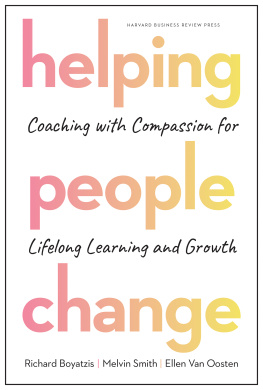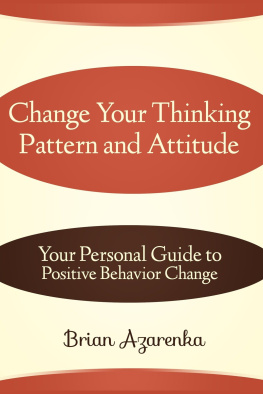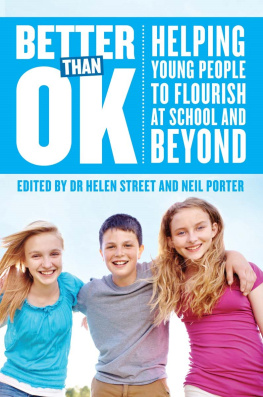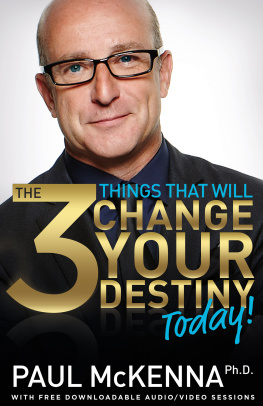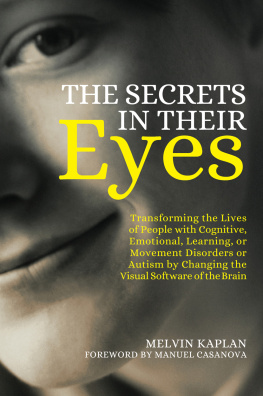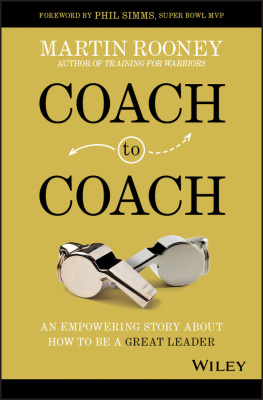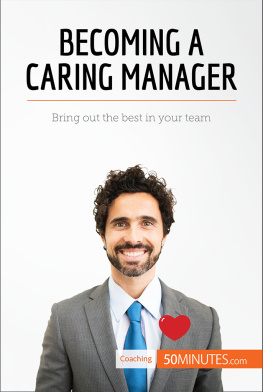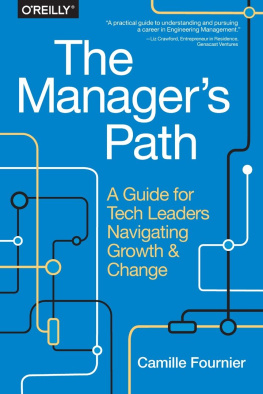CHAPTER 2
conversations that inspire
discovering what is most important
Emily Sinclair was the youngest of three daughters in a family of great soccer players. Her mother played soccer in high school and college, as did her two older sisters. Following in their footsteps, Emily began her freshman year of high school as a standout player on the soccer team. Soon, however, Emilys coach noticed that while she had great skills, she just didnt show the kind of passion for the game he had seen in other star players hed coached over the years. He noticed something else about Emily: she had an unusually graceful stride as she ran up and down the field. And to his surprise, she seemed to absolutely love the running drills that the other girls dreaded during practice.
One day, acting on a hunch, the coach called Emily over after practice. Emily, why do you play soccer? he asked.
Somewhat puzzled, she responded, Because everyone in my family plays soccer. And because Im really good at it.
Then the coach asked, But do you love it? He could see the wheels spinning in her head as she processed his question.
With a somewhat dejected look, she shook her head. No. I dont, she answered. Playing soccer was really fun when I was younger. But now it feels like something I have to do. Everyone expects me to be like my mom and sisters. I dont want to let them down.
Thats when he realized that his job as Emilys coach had, in an important way, just begun. Rather than continue to try to get her to fit in as a soccer player, he asked about her true interests. He wasnt surprised to learn that she had a passion for running. Running was effortless for her, she said. When running long distances, she felt relaxed and free from all the worries and cares in her life. After several more conversations with Emily and then an initially difficult discussion with her family, the coach and her family gave Emily their blessing to leave the soccer team and switch to running track for the spring semester. By her junior year, Emily was the number one runner on the girls cross-country team, and as a senior, she led the team to the state finals.
While he lost one of his better players, the coach knew hed done the right thing by following up on his initial hunch about Emily. In the process, he helped her find her true passion.
This is what great coaches do. Its what great managers do and great teachers do and what others do who know how to help people find and do what they love. They engage us in conversations that inspire us. They make us want to develop and change, and they help us to do so. In this chapter, we will explore how to help people by inspiring them to grow and change. We call this coaching with compassion. Its objective? To establish a resonant relationship between the coach and the person being coached, which is crucial to creating sustained transformation. Additionally, in this chapter and throughout the book, we will ask youas someone who wishes to help othersto learn about yourself, your emotions, and motivations. This is a critical step that everyone needs to take before attempting to help others change, and we provide an exercise in this chapter to help you begin that process.
But first, lets define what we mean by coaching.
what is coaching?
In this book, we will talk about coaching effectively both as a profession (executive coaches and the like) and as part of our daily lives and roles as managers, teachers, doctors, clerics, parents, friends. Our definition, like most, converges on coaching as a facilitative or helping relationship with the purpose of achieving some type of change, learning, or new level of individual or organizational performance.
Unlike mentoring, which can sometimes last over decades, coaching typically involves a shorter time period and a more specific focus. In our work, we focus on an explicit dyadic coaching process, which means that there is a mutual agreementformal or informalbetween coach and coachee that they are participating in a developmental process. Sometimes coaching takes place during predetermined coaching sessions, but it also can occur while walking to or from meetings, at lunch, or in other less formal settings. Note that although the number of professionals using the actual title of coach is growing at dramatic rates worldwide, coaching as we use the word also might be an informal or formal advisor, a boss, or a peer.
the coaching conversation
Coaching, when it is most effective, is essentially about helping another person change, learn, or grow in some way. It is about helping people figure out what might be possible or desired in their lives and then helping them figure out how to achieve it.
Like Emily Sinclair, most of us have had someone in our lives who talked to us about our future or otherwise influenced us positively. In our graduate courses, executive education programs, and in our Conversations That Inspire MOOC, we ask participants to recall the people who really helped them most in their lives. One person referred to her blind step-grandfather, who loved her unconditionally and instilled within her a passion for learning. For another individual, it was a friend who made him feel acceptedno matter what issue he was struggling with or what outrageous goal he had in mind. He always knew he wasnt being judged but rather encouraged and fully supported.
Many participants referred to individuals who actively listened to them. They spoke of coaches or others who asked reflective questions that helped them analyze and delve deeper into their thought process and whothrough their care, concern, and insighthelped them work through confusing emotions. Often these helpers guided them to develop a realistic plan of action, all while helping them feel understood and supported in just the right way.
Managers in other courses, training programs, and MOOCs described individuals who motivated and inspired them to pursue their dreams and to ultimately achieve more than they ever thought was possible. They wrote about people who helped them grow by focusing on their strengths and instilling within them a sense of confidence and capability. They also described individuals who werent afraid to give them honest feedback, even when it was difficult to hear. In those cases, however, the feedback (when effective) was given with .)
people who have helped me the most
The people who have most helped me to grow as a person believed in my potential and inspired my creativity and desire to learn. They have challenged me, and when I have accepted the challenge, the results surprised even myself. Another common pattern in their behavior was their genuine care for my well-being and their emotional involvement in my success.
Stanley (Canada)
These people not only see the spark, but they nurture it. They help bring out your best by allowing you to flourish. Feeling my spark acknowledged also made me feel affirmed in a way I hadnt experienced before.
Angela (USA)
All those that were important figures in my life planted seeds of inspiration and ideas, and then allowed me the freedom to take that in directions that worked best for me, all the while supporting, and encouraging my choices. That gave me huge confidence.
Beverly (USA)
They valued me as a person in a way I had never seen myself, thus unleashing completely new thinking, opportunities, and possibilities, which led to lots of energy, and me driving for new changes which I would never have pursued without this input.

